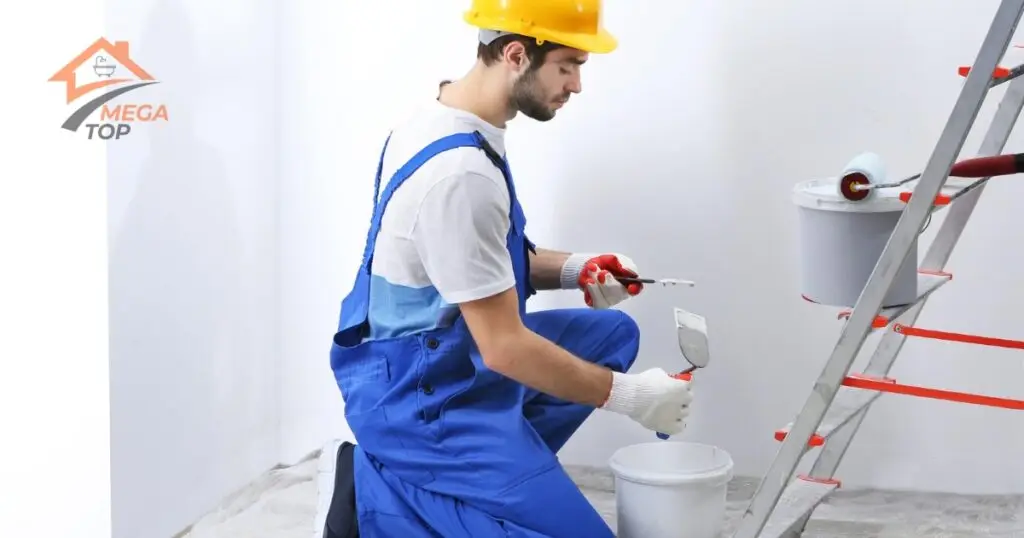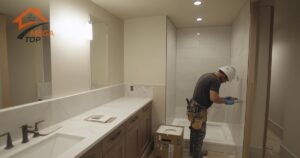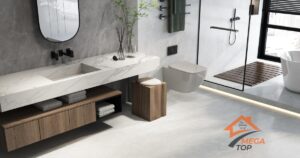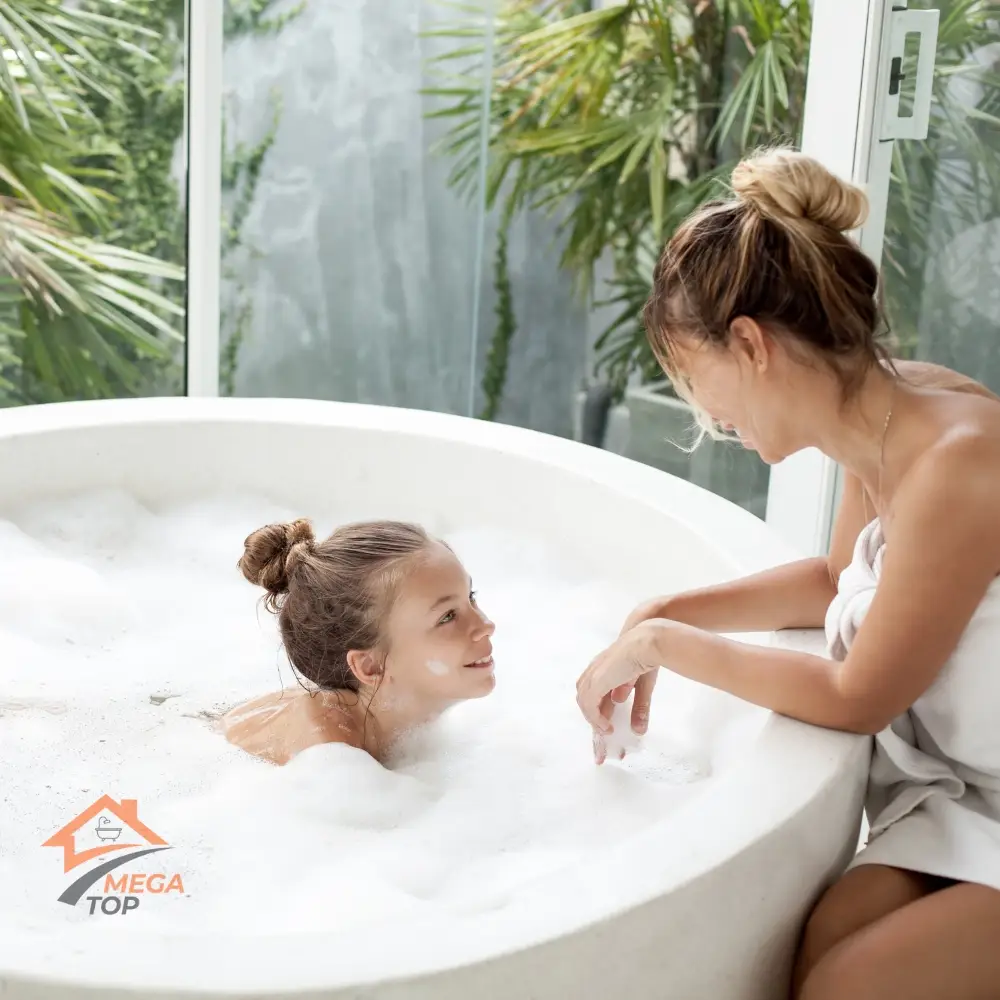Why Waterproofing a Bathroom Is Essential
Waterproofing your bathroom is crucial to prevent damage caused by moisture and leaks. Bathrooms are high-moisture areas, and without proper protection, water can seep into walls, floors, and fixtures, leading to expensive repairs.
Common Problems Caused by Water Damage
- Mold and Mildew Growth: Excess moisture creates an ideal environment for mold and mildew, which can harm your health.
- Structural Damage: Prolonged exposure to water weakens walls, floors, and the bathroom’s foundation, requiring costly renovations.
Benefits of Proper Waterproofing
- Extended Lifespan of Fixtures: Waterproofing prevents rust and deterioration in fixtures, saving money over time.
- Improved Air Quality: By controlling moisture, you reduce the risk of mold, ensuring a healthier environment.
Cheapest Waterproofing Methods for Bathrooms
Several affordable waterproofing methods can protect your bathroom while staying within budget. Waterproofing paint is one of the most economical and effective solutions.
Using Waterproofing Paint
Waterproofing paint is a specialized product designed to resist moisture and seal surfaces against leaks.
- Protection: Creates a waterproof barrier that prevents water from penetrating walls and ceilings.
- Versatility: Can be used on a variety of surfaces, including drywall, concrete, and tile.
- Types Available: Choose between acrylic, epoxy, or silicone-based paints depending on your needs and budget.
Applying Bathroom Sealant
Sealants are an inexpensive way to waterproof specific areas prone to leaks.
- Affordable Options: Silicone-based caulking is widely available and easy to use.
- Step-by-Step Guide:
- Clean the area to remove dirt and grime.
- Apply the sealant to gaps, edges, and corners.
- Smooth the sealant with a tool or your finger for an even finish.
Installing Waterproof Membranes on a Budget
While traditionally used in professional installations, budget-friendly waterproof membranes are now available for DIY projects.
- Cost-Effective Choices: Peel-and-stick membranes are an affordable option for floors and walls.
- Installation Tips: Focus on areas around the shower, bathtub, and sink.
DIY Waterproofing Tips for Bathrooms
Tackling waterproofing as a DIY project can save you significant money. Here’s how to do it effectively.
Preparing Your Bathroom for Waterproofing
- Clean Thoroughly: Remove all dust, grease, and soap residue to ensure materials adhere properly.
- Identify Vulnerable Areas: Pay attention to cracks, joints, and high-moisture zones.
Step-by-Step Guide to Using Waterproofing Paint
- Gather Materials: Waterproofing paint, brush, roller, masking tape, and cleaning supplies.
- Mask Off Areas: Use tape to protect areas you don’t want painted.
- Apply the Paint:
- Use a brush for corners and edges.
- Roll on the paint for larger surfaces.
- Allow to Dry: Follow the manufacturer’s instructions for drying times before applying a second coat.
Additional Low-Cost Waterproofing Solutions
- Caulking: Fill gaps between tiles, around sinks, and in corners to prevent water seepage.
- Anti-Slip Waterproof Coatings: Add protection to floors while improving safety.
Comparing Waterproofing Paint with Other Methods
Selecting the right waterproofing method depends on your budget and the level of protection required.
Pros and Cons of Waterproofing Paint
- Pros: Easy to apply, affordable, and effective for walls and ceilings.
- Cons: May require reapplication in high-moisture areas over time.
Cost Comparisons: Paint vs. Sealants vs. Membranes
- Waterproofing Paint: $20-$50 per gallon, ideal for walls and ceilings.
- Sealants: $5-$15 per tube, best for small gaps and edges.
- Waterproof Membranes: $50-$150 for DIY-friendly products, suitable for larger areas.
DIY vs Professional Waterproofing Services
While DIY methods are cost-effective, hiring a professional has its advantages for long-term results.
Risks of DIY Waterproofing
- Common Mistakes: Improper application can lead to leaks and insufficient protection.
- Health Concerns: Some waterproofing materials emit fumes that require proper ventilation.
Benefits of Hiring Experts
- Durable Results: Professionals use high-grade materials and proven techniques for lasting protection.
- Warranties: Many services include guarantees for peace of mind.
By choosing waterproofing paint and combining it with other budget-friendly solutions like sealants and membranes, you can effectively waterproof your bathroom without overspending. Ready to start your project? Consult a professional today for expert advice or assistance!
FAQ
Prices range from $20-$50 per gallon, depending on the brand and type.
Yes, with tools like waterproofing paint and sealant, most homeowners can handle basic waterproofing.
Waterproofing paint can last up to 5-10 years with proper application and maintenance.
Focus on high-moisture areas like the shower, sink, and tub surrounds.
Waterproofing paint combined with sealants is the most affordable DIY solution.





